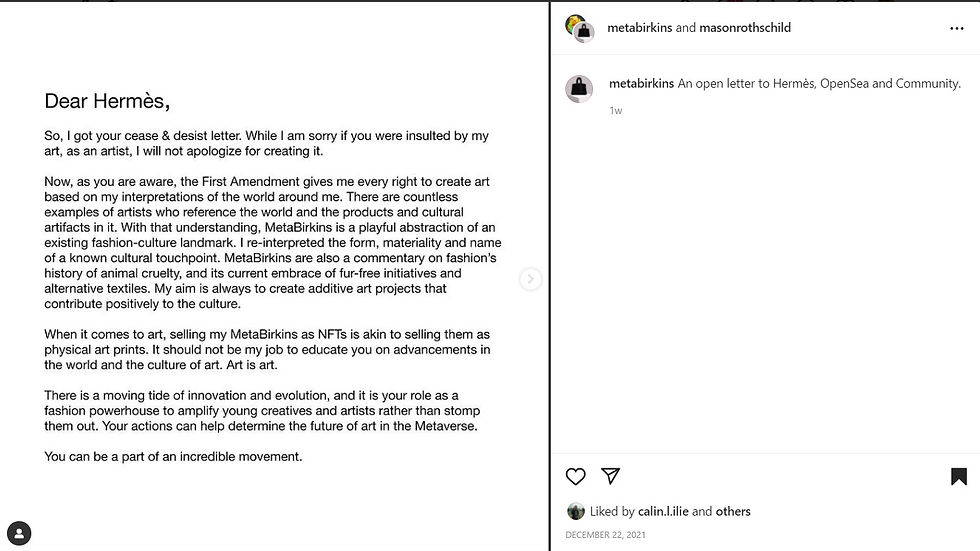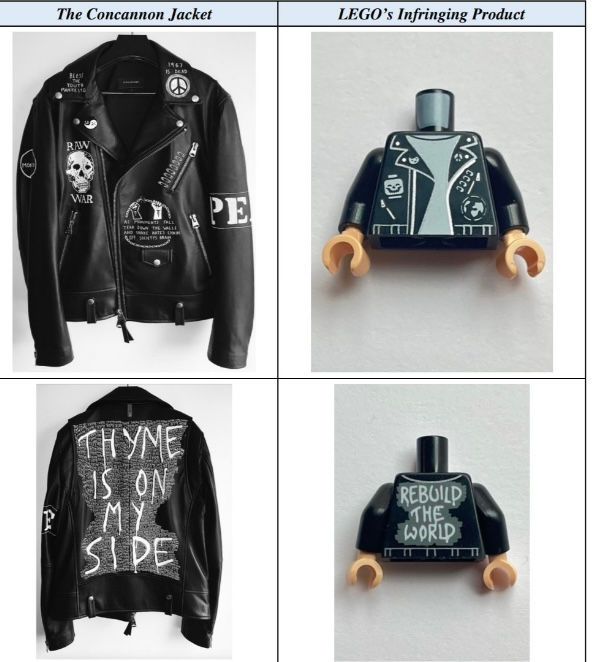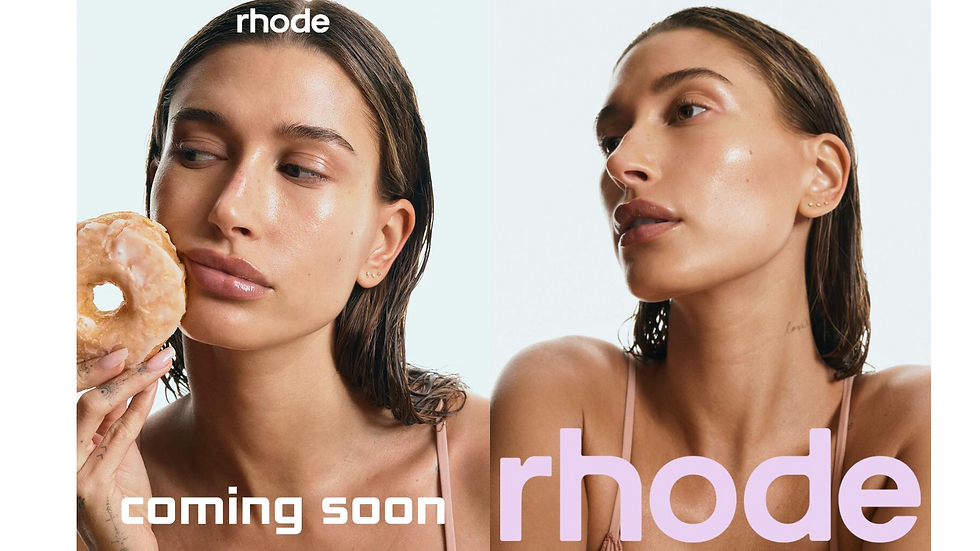Baby Birkins to MetaBirkins: Intellectual Property Issues in the Metaverse
- Ariel Lola
- Jan 2, 2022
- 3 min read
REPOSTED FROM THE ARCHIVE
Nowadays, the Devil might wear digital Prada. Human immersion into virtual worlds is expanding, and along with it the new intangibles—including digital fashion. While digital fashion provides exciting possibilities, the digital world is mirroring intellectual property issues in the physical world. Unfortunately, Hermès is demonstrating to all fashion brands the potential for widespread and unauthorized use of brands’ assets in the metaverse.

Image from The Fashion Law.
Recently, Mason Rothschild, a non-fungible token (“NFT”) artist, created 100 Birkin bag NFTs for sale on OpenSea—a NFT marketplace—without permission from Hermès, which amounts to what could be considered a counterfeit in the metaverse. MetaBirkins replicate the signature shape and features of a Birkin handbag except differ by being solely digital and in available in alternative textiles. Rothschild is bringing in a large profit from co-opting the Hermès’ Birkin: the first MetaBirkin NFT sale was for roughly $40,000 in Ether and total sales are almost $800,000. Further, Rothschild’s NFTs have inspired other NFT artists to copy, create and profit from fake MetaBirkins on OpenSea. A Hermès representative commented that MetaBirkins, “infringe upon [its] trademark rights and are an example of fake Hermès products in the metaverse.” Following, Hermès sent Rothschild a cease-and-desist letter, which Rothschild responded to in a public Instagram letter addressed to Hermès claiming fair use.

Image from Rothschild's Instagram (@masonrothschild).
Unlike other luxury fashion brands, Hermès has not entered the metaverse market. The brand states that it, “values the ‘tangible’ expression of handcrafted physical objects”. Other brands see the value in expanding into the new intangibles and digital worlds. For example, Louis Vuitton launched a NFT Game with Beeple Art, Givenchy created an NFT for the LGBTQIA+ cause, Burberry dropped an NFT collection in Mythical Games’ Blankos Block Party , Gucci sold $12 virtual shoes, and Balenciaga partnered with Epic Games to create high fashion Fortnite skins and an in-game immersive Balenciaga experience. Further, Decentraland announced a Metaverse fashion week, indicating that fashion is just starting to immerse itself in virtual environments.
While Hermès has not followed this trend, their brand assets have been used without consent twice by Rothschild. Before MetaBirkins, he collaborated with Eric Ramirez, a fellow NFT artist, to create an NFT called “Baby Birkin” which sold for $23,500 in Basic.Space. The virtual bag had a 3D animation of a 40-week-old fetus growing within the bag. The baby moves around the bag and was meant to be an ironic interpretation of the handbag. Hermès never pushed back on the “Baby Birkin” NFT perhaps finding it unnecessary for, at the time, a one off NFT art piece. Hermès is not alone. In Roblox, a metaverse gaming platform, users can purchase Burberry, Chanel, Prada, Dior and Louis Vuitton despite these brands seemingly not consenting or collaborating with the platform.

Image from Vogue Business.
As fashion brands’ assets are being used without permission, the metaverse creates questions around ownership and legality. Unauthorized use of brands’ assets such as NFT Birkin Bags, could be considered counterfeits. However, this issue becomes confusing because trademarks are registered by category. “Birkin” is registered for leather goods and leather handbag, so according to Jeff Trexler, associate director of Fordham University’s Fashion Law Institute, Rothschild could argue that Hermès is not registered for digital art and that the image is fair use due to the Birkin’s cultural significance. Which is exactly what is happening in the case of the MetaBirkins.
Hermès has not filed suit against Rothschild, but according to The Fashion Law, a suit would be based on trademark infringement and/or dilution claims. However, Rothschild is claiming MetaBirkins are “a commentary on fashion’s history of animal cruelty, and its current embrace of fur-free initiatives and alternative textiles.” Through this alternative message, Rothschild states that he is protected under fair use to create art or parody. Even so, The Fashion Law explains that this shield is limited if the infringing trademark’s use causes a likelihood of confusion.
Regardless, the metaverse is raising interesting issues, potential cases and legal questions. As the metaverse continues to expand it will be intriguing to see fashion brands’ strategies whether that is immersing themselves into the digital market or staying with physical goods. Even more crucial will be seeing what, if any, legal responses arise to intellectual property issues in the metaverse.




Comments